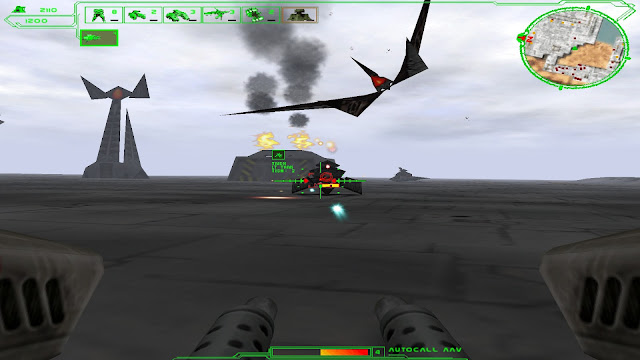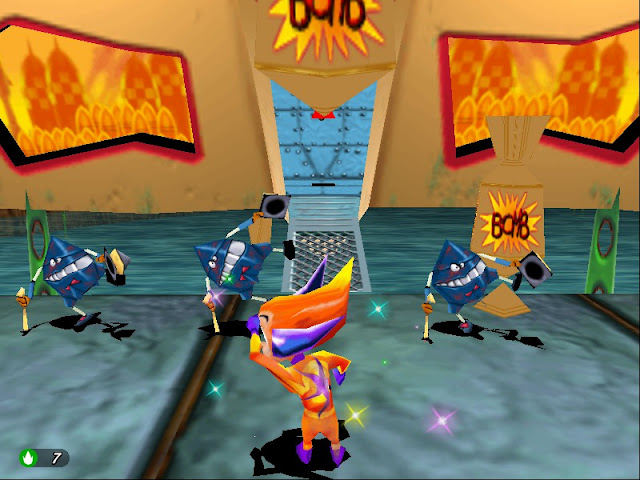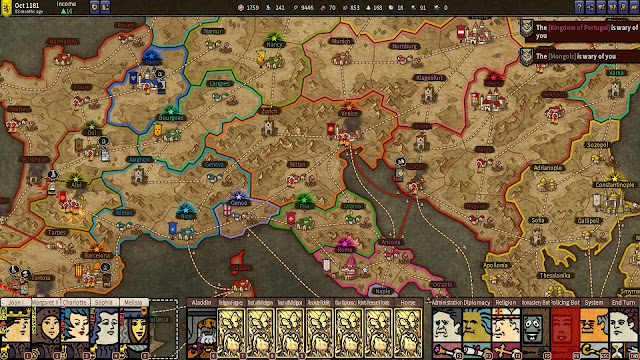Uprising 2: Lead and Destroy Review | Tank again
I would define Uprising 2 as a game belonging to the "iterative sequels" category, a typology of games who are direct sequels with some new gimmick while sharing most of their mechanics. Depending on your standing on the predecessor, this can be either a good or bad thing.
Aesthetics
The 3d graphics used here are a step up from its predecessor: the textures are cleaner and made much more readable. Apart from this detail, the overall look is pretty much the same.
User interface being heterogeneous, the particle details being flashy, and a sparse amount of animations are all traits in common with its predecessor. Like one could expect, they are just a bit more refined.
The voice acting is sparely used, but what there is it's fine enough.
For some reason, the music is bugged, the game wouldn't play the tracks despite them being present in the dedicated folder, it's not deal breaking, but it's worth to mention. The tracks themselves aren't something extraordinary, but it would still have been nice if they were played out.
Luckily, the sounds alone are good enough, they still manage to give a sense of chaotic fury during the battles.
In short, if it weren't for the broken soundtrack, the overall appeal of the game would be a clear step up.
Game Mechanics
 |
While bigger, the map is harder to read without the side numbers and letters |
Like its predecessor, the game is a mech shooter, in particular a futuristic tank simulator, with a good dose of strategic elements added to the mix. There are going to be a lot of referencing due to the similitude between the two. It's advised to read the previous review here.
The maneuvering of the tank has been simplified, there isn't any way to boost a particular subsystem in any way or form, and it's possible to directly select the reinforcements by pressing shift and clicking with the mouse on the desired unit. At the start of the game you are able to move and shoot with your tank, conquer hot zones by dropping a citadel, build structures on these zones and call in reinforcements produced by these structures. You can have several weapons at your disposal, but only 2 can be used at the same time, with the starting ones being a laser gun and heat seeking missiles. There are also random drops that can give you money, health, ammo or a free random unit. Beyond the action on the field, you can also unlock new structures and weapons in the upgrades' menu.
The overall economy is almost identical to the first one, there are 2 currencies: energy and credits. Energy is used during the
battles, its main purpose is to balance the pacing, it's used to build
structures and train units. Energy can be gained either by building a mining facility, by killing
enemies or gathered by one of the random drops. Credits are used in the
systems overview to buy upgrades for your tank, upgrade for units and structures, unlock new buildings or temporary buffs valid for a
mission. The main difference is that now it's impossible to spy on other planets and gather intel.
The manual states that the mission are more varied and it's a bit true, while the main objective in almost all missions remains to conquer all the hot
zones on a planet, some have escorts that must be protected or planets in which it's not necessary at all to conquer hot zones, a step forward indeed.
Nothing much to say about the save system, it's very permissive, you can save at any time you want and load at any time you want.
Another small difference is the approach to the planets, in this game you are not able to choose in which planet to go, there is only a predetermined path. At least you can play on any planet you want using the scenario menu, or better yet make your own custom maps with the editor.
The enemy design isn't changed, they still have the same tools at disposition of the player, except for the tank itself and the fact that they have structures disjointed from the hot zones producing units constantly. It still has the annoying behavior of spawning groups of units right in front of me. It's still very aggressive and it's going to keep you constantly under pressure and keep an eye for your citadels.
For the main campaign, while there aren't any modifiers in the game, in most missions there are optional side quests that offer an extra challenge which, if bested, grants extra money. A decent way to stimulate the player.
I finished the game in 7 hours.
Summarizing, a streamline in some areas have made the game more accessible but also less interesting.
Narrative
 |
Briefings give context, but don't expand on the lore |
In a far future, after defeating the iron grip of the Imperium, a new alliance rose from the ashes. A hundred years later, a race of aliens long forgotten, called the Kri'iSara, are trying to exterminate anything in their path. A new war has broken out and it's time for the alliance to push the aliens back.
This is the general premise explained in the manual and heavily hinted in game.
The story is not the main focus, to the point that there isn't any named character in game, come in for the gameplay, not the story.
Recommendation:
Uprising 2 is more and less polished in some areas than its predecessor, but some quality of life improvements made it a more approachable title for neophytes of mech shooter/tank sims.





This may be the last written review I'm going to post. I want to try my luck doing videos on YouTube. Thanks to everyone who read my stuff.
ReplyDelete